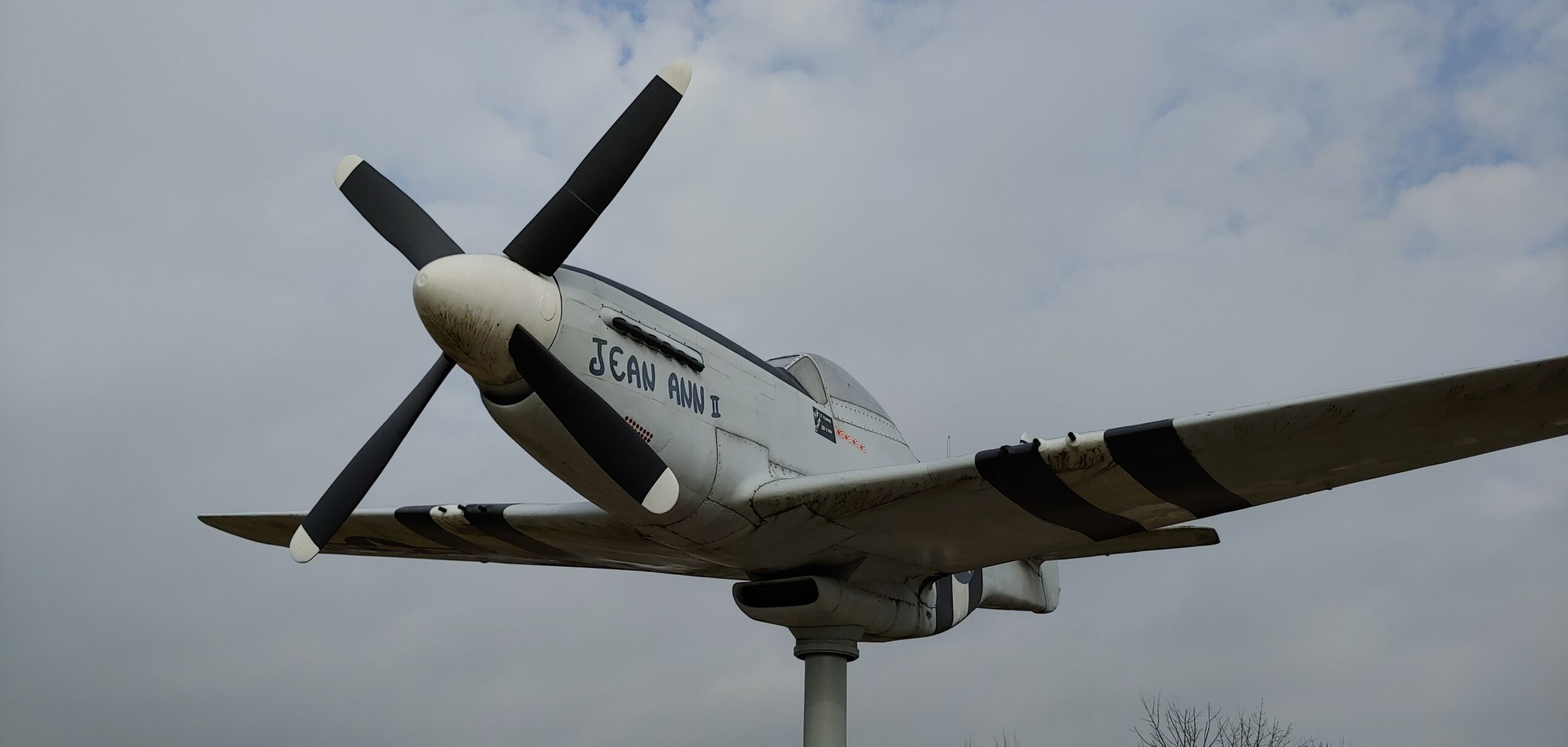While passing through Akron, Ohio, I was searching for something to do for a few hours besides the Pro Football Hall of Fame, and a quick Google search turned up the Military Aviation Preservation Society or MAPS Museum. The museum is located just off Interstate 77 at the back of the airport and is open from 9 – 4:30 Tuesday – Saturday and 11:30 – 4:00 on Sundays. Admission is $10.00 for adults and $6.00 for children, with discounts for seniors, veterans, and children under 6.
Upon entry, there are two tour options: self-guided with narration via their app or a free guided tour. I highly recommend the guided tour. It is given by veterans and volunteers from the Preservation Society. I was there early and ended up with my own private tour guide, who had a wealth of knowledge about all of the aircraft and gladly answered any questions that I had. Here are some of the tour highlights.



From late 1943, P-51Bs and P-51Cs (supplemented by P-51Ds from mid-1944) were used by the USAAF’s Eighth Air Force to escort bombers in raids over Germany, while the RAF’s Second Tactical Air Force and the USAAF’s Ninth Air Force used the Merlin-powered Mustangs as fighter-bombers, roles in which the Mustang helped ensure Allied air superiority in 1944 The P-51 was also used by Allied air forces in the North African, Mediterranean, Italian and Pacific theaters. During World War II, Mustang pilots claimed to have destroyed 4,950 enemy aircraft (Wikipedia).



The C-47 was vital to the success of many Allied campaigns, in particular, those at Guadalcanal and in the jungles of New Guinea and Burma, where the C-47 and its naval version, the R4D, made it possible for Allied troops to counter the mobility of the light-traveling Japanese Army. C-47s were used to airlift supplies to the encircled American forces during the Battle of Bastogne in Belgium. Possibly its most influential role in military aviation, however, was flying “The Hump” from India into China. The expertise gained flying “The Hump” was later used in the Berlin Airlift, in which the C-47 played a major role until the aircraft were replaced by Douglas C-54 Skymasters (Wikipedia).

The Douglas A-26 Invader (designated B-26 between 1948 and 1965) is an American twin-engined light bomber and ground attack aircraft. Built by Douglas Aircraft Company during World War II, it also saw service during several major Cold War conflicts. A limited number of highly modified United States Air Force aircraft served in Southeast Asia until 1969. It was a fast aircraft capable of carrying a large bomb load. A range of guns could be fitted to produce a formidable ground attack aircraft (Wikipedia).
The museum has many other aircraft and the cockpit of a blimp. What I really enjoyed about this Museum compared to others is that you can climb up to the cockpits to get a close-up look rather than just walk around the hangar. I would highly recommend this museum if you are in the Canton area!
